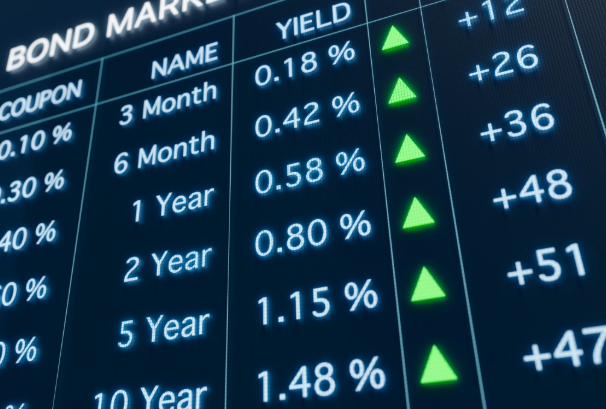The Fragile Plumbing Beneath America’s Financial Empire
Earlier this week I was reflecting on the hidden machinery behind global finance — the plumbing we never see but rely on completely. Here are a few thoughts on that quiet, fragile architecture.
11/17/20253 min read


Beneath the surface of American finance lies a machinery so essential yet so rarely acknowledged that its quiet persistence is taken for permanence. It is not the stock market, nor the banking system, nor the corporate giants whose names populate headlines. It is something far more foundational: the plumbing that keeps money moving, collateral flowing, and trust intact. This plumbing—made of repo agreements, Treasury auctions, dealer balance sheets, margin systems, and the global demand for dollar liquidity—forms the hidden architecture of the modern economic world. And today, that architecture is far more fragile than its steel façade suggests.
Treasuries are often described as “risk-free assets,” a phrase so common that its absurdity goes unnoticed. Risk-free only in their creditworthiness, they act less like investments and more like infrastructure: the pipes through which global finance circulates. Banks use them as collateral. Hedge funds use them as the backbone of leverage. Money market funds treat them as near-cash. Foreign governments hold them as reserves. Derivatives markets settle against them. Entire funding markets rely on their stability. In a world built increasingly on borrowed capital, the liquidity of Treasuries matters more than the solvency of any company or even many countries.
Yet something peculiar has happened over the last decade: the Treasury market has grown far faster than the institutions responsible for absorbing and distributing that debt. The United States issues more bonds each year to finance deficits that have become structural rather than exceptional. But the balance sheets of primary dealers, the intermediaries whose job is to ensure smooth market functioning, have not grown with it. Regulation tightened after 2008, and with good reason, but it unintentionally left the system with thinner shock absorbers. The pipes widened; the valves did not.
Into this gap stepped a new class of operator: leveraged hedge funds running basis trades. They buy Treasury bonds, short the futures, and use extreme leverage—sometimes forty, fifty, even eighty times their capital—to profit from microscopic pricing differences. These trades add liquidity in good times but become accelerants in stress. When volatility rises, the leverage turns against them. A small move becomes a margin call. A margin call becomes forced selling. And forced selling in the safest market in the world ripples outward with a speed that surprises even seasoned professionals.
This dynamic was exposed in March 2020 with a clarity no one desired but everyone remembers. The popular story is that markets collapsed because the world shut down. The deeper truth is that the U.S. Treasury market, the core of global plumbing, nearly failed. Treasuries—the asset investors normally buy in panic—were being sold aggressively because institutions needed dollars immediately, because hedge funds were unwinding leveraged positions, because foreign central banks were raising liquidity, and because dealers had no balance sheet space left to absorb the cascade. Bid–ask spreads exploded. Repo markets strained. Yields whipped in ways incompatible with a functioning system.
It was a cardiac event in the financial circulatory system, and the Federal Reserve intervened not to stimulate the economy, but to prevent the pipes from bursting. The “QE” of 2020 was less a policy choice than an emergency repair job. It was the central bank acting as plumber, restoring flow where flow had stopped. And when the Fed stepped in with enormous force, the system calmed—not because the underlying economy stabilized, but because the pipes were unclogged.
One might imagine that such an event would spark a reconstruction of the system’s architecture. It did not. Treasury issuance continues to rise. Dealer capacity remains constrained. Leverage in basis trades has returned. Foreign buyers have quietly stepped back. Liquidity still evaporates quickly during moments of stress. The market’s size now exceeds the ability of the private sector to manage it unaided. The system has evolved into one that functions smoothly under normal conditions but depends on the Federal Reserve the moment volatility becomes disorder.
This is not a moral failing nor a political indictment. It is a structural reality: the scale of the U.S. financial system has outgrown the pipes originally designed to carry it. The Fed is no longer simply a guardian of price stability. It has become the silent backstop of market functioning, the institution that prevents liquidity shocks from turning into systemic failures. The next crisis—whatever its cause—will reveal the same dynamic. A sudden rise in yields, a geopolitical surprise, a strained auction, an inflation shock: the triggers differ, but the mechanism is familiar. Liquidity will thin. Leverage will unwind. Collateral flows will jam. And once again the central bank will be called upon to restore movement.
Stability in this world no longer comes from the absence of risk. It comes from the capacity to intervene before the plumbing collapses under pressure. The pipes beneath America’s financial empire remain strong enough to carry the flow of ordinary days, yet fragile enough that they cannot endure extraordinary ones without help. The system survives not because it is invincible, but because someone stands ready to rescue it the moment it falters. And in that paradox lies the quiet truth of the financial age we now inhabit.